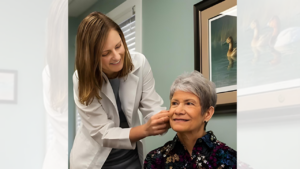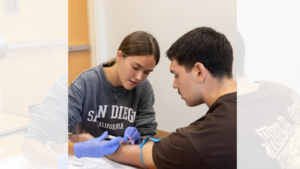“Safe driving is important for everyone. Obviously, there’s a lot of conversation about making sure that we’re driving safely at all age ranges. But all things considered, it is a little bit more of a safety risk to be driving as an older adult.”
That’s Kelly Weiman, Director of Rehabilitation Services at Crawford County Memorial Hospital. She is a doctor of physical therapy with 15 years of experience. Weiman specializes in orthopedics, women’s health, and pediatrics. CCMH Rehab Services focuses on making sure everyone has safety and mobility with an emphasis on helping those who need assistance to have the ability to get around and do what they want to do.
Nonetheless, based on statistics from the National Highway Transportation Safety Board, people aged 65 and older accounted for 17% of all traffic fatalities in 2021. Weiman recognizes the obstacle of pointing out the shortcomings of older drivers.
“I think it’s a difficult conversation for most people because, you know, 65 really isn’t that old. But there are approximately 300,000 adults that are involved in traffic accidents each year. And the mortality rate and the injury rate for older adults is significantly higher because of things that happen as we age like heart disease, osteoporosis, these sorts of things. And it’s also a little bit more concerning with regards to people’s ability to drive safely as they get older.”
Weiman says as people age, a number of very subtle, yet important, changes are happening to both eyesight and reflexes.
“Cataracts, glaucoma, macular degeneration, these are all issues that people face as they age. In addition to that, obviously some strength, reflexes and things like that are involved. Most people over the age of 65 do take multiple medications as well. And a lot of times these medications may make us a little bit drowsy or a little bit dizzy, but when you take multiple medications, these can significantly affect your reaction time. They can affect your ability to stay awake behind the wheel, and they can affect your ability to see what’s coming and react to those things. And that can be a serious concern for drivers.”
What advice would Weiman give to older drivers to help them to be safer on the roads?
“The biggest thing that I would ask older drivers to consider is to be honest with themselves about their ability to drive safely. You want to have your vision checked at least once yearly. If you have concerns with your vision, you may need corrective lenses. If you have significant deficits with your peripheral vision, keep in mind you may not see something jumping out in front of you and you may not be able to react. If you don’t see well enough to be driving, you should consider alternatives for transportation.”
Beyond impaired vision, Weiman also suggests talking to your primary healthcare provider and pharmacist.
“Having a discussion with your physician and your pharmacist about medications is important. One, to see if the medications you’re taking are necessary, and two, what sort of side effects from those medications you should be concerned about. Then, keeping on top of overall wellness checks, making sure that your health and your own safety is right where it needs to be to drive.”
Weiman says it’s not all bad news for older drivers, though.
“The good news is that older adults are more likely to have safer driving behaviors than other age groups. And there are some key steps all of us can take to stay safe on the road. One, always wear a seat belt as a driver or passenger. Seat belt use is one of the most effective ways to save lives and reduce injuries in crashes. Two, drive when conditions are safest. Drive during daylight and in good weather. Conditions such as poor weather and driving at night increase the likelihood of crash injuries and deaths. Finally, don’t drink and drive.”


